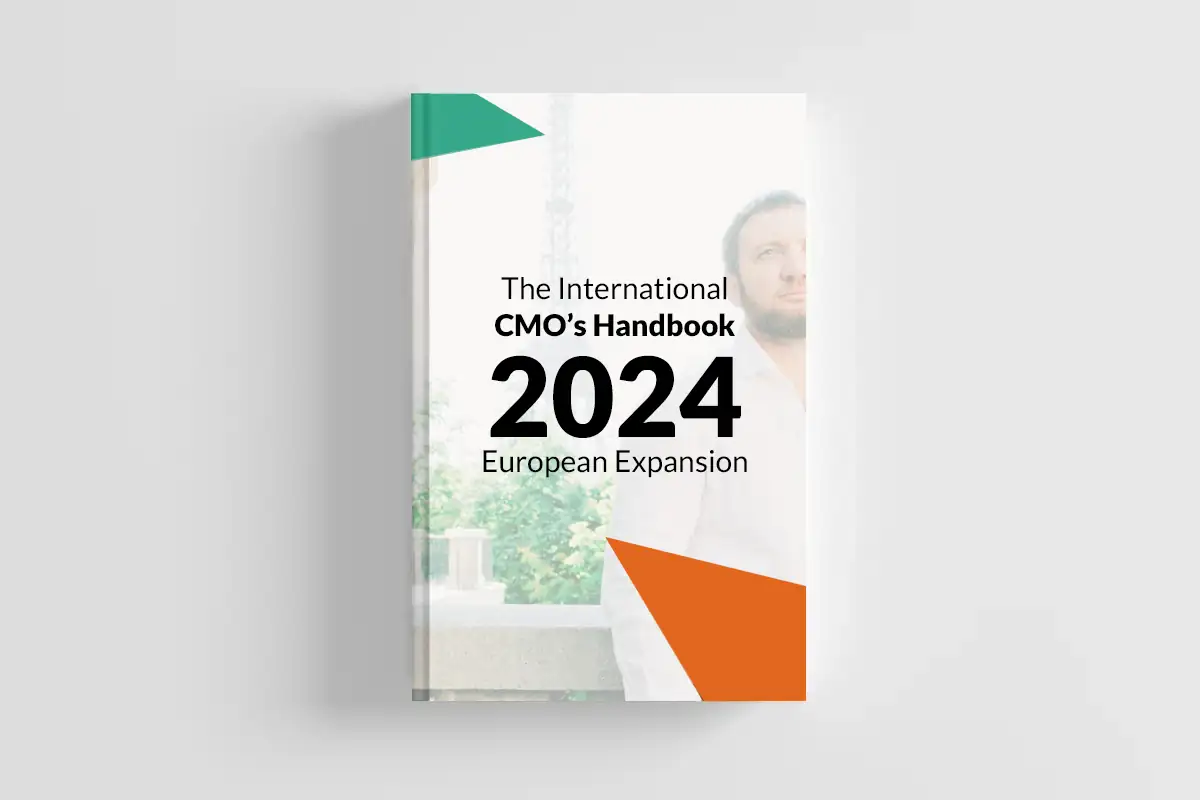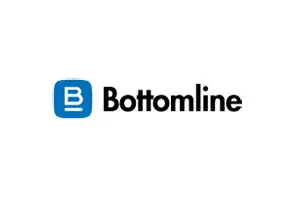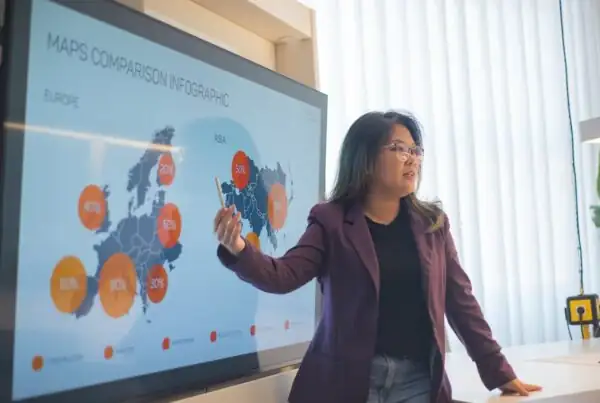Expert advice on expanding your business in Europe
Europe is a lucrative, but unique marketplace. Dozens of languages, markets and cultures make finding the right strategy unusually challenging. What works in the US or UK may not translate easily to Europe, but equally, consumers in one part of the continent may behave very differently from those in another.
Getting it wrong is costly. Thousands and millions of dollars have been wasted, over the years, because companies didn’t approach a market in the right way. Without specific experience in international expansion, even the most capable CMOs can falter.
To help CMOs achieve a more successful expansion, we interviewed a selection of global CMOs, each with a successful track record of expansion in Europe. They cover key issues such as the nuances between different countries, the importance of research, languages, technology, and the challenges of finding your market.
We’ve collated insights from their responses to give you practical advice on how you can achieve a smoother and more successful European expansion.
Many thanks to everyone who contributed to this handbook.

”Europe is not a monolith, every market has unique DNA. It is critical for any centrally run marketing team to work with agencies that can tap into local insights. However the reverse is also true, many outstanding ideas have come from local culture but have strong universal appeal.
Menaka Shroff - GoogleSenior Director, Marketing

Table of contents
In this document we’ll be exploring…
This report has been put together with insights from some of the leading names in the business including:
- Menaka Shroff – Senior Director, Marketing – Google
- France Cresson – Head of Global Online Media – Club Med
- Judith Van Dijk – Head of Marketing, UK – Shopline
- Jonathan Donovan – Digital Marketing Director – Penguin Random House
- Marina Zavelion – Head of Global Marketing – Mindgram
- Zhenya Winter – Head of Global Marketing – Bottomline Technologies
Establish Demand
First Principles Assessing Demand
Before you do anything else, you need to know if demand is there. Many companies make the mistake of jumping in too early or assuming they will be able to create demand. However, unless you’re a major brand with name recognition, that might not work.
”I’m a big advocate of understanding market size. Everything depends on that.
“I have worked on go-to-market projects where there is an assumption of what the principal market is, not definitive research. I feel this is one of the big caveats,” says Judith Van Dijk, Head of Marketing at Shopline. “When I do go into a project to do something that is launching in a new region, I’m actually a big advocate of understanding how big is that market. Everything depends on that, the budget I’m going to spend, and the resources I’m going to put there.”
Surprisingly, perhaps, even major brands such as Google also look for organic demand. Menaka Shroff of Google states:
“To successfully expand your demand generation efforts, you must first establish a solid foundation. This includes having some existing organic lead generation, strategic partnerships to broaden your reach, and a basic understanding of SEO/SEM/Social to ensure visibility and a functioning sales funnel. Furthermore, to avoid delays in reaching a wider audience, you’ll need scalable language solutions in place. Addressing these fundamental elements will position you for sustainable growth when scaling your demand generation strategies.”
”There needs to be some organic demand gen that’s already happening.
She adds that: “creating demand shouldn’t be that difficult for your product. If you’re working way too hard to create demand and you’re unable to fulfil that promise, then maybe you don’t have a great product. I feel like there’s a lot of premature jumping into a country because it sounds like the right thing, and then people realize it’s not there.”
Before committing to a country, therefore, you should:
- Research the market thoroughly.
- Send salespeople to assess potential demand.
- Find customers who will embrace your product as it is.
Success story: UFC
In late 2020 AccuraCast and UFC embarked on an exciting journey to ramp up brand awareness and fan engagement of mixed martial arts in France.
At the time, UFC had little penetration in the country, so they had to educate customers about the concept of MMA through content, captivating creatives, giveaways, and much more. This tactical approach incorporated informative and engaging elements into their MMA content to captivate the audience and ignite their interest in MMA.

Regulation and Data Protection
When it comes to regulation, Europe tends to lead the way. From financial regulations to data protection, the EU has laid down templates for where others will follow. Coping with the heightened European compliance demands, therefore, can put you ahead of the game in other markets.
But that doesn’t mean it’s easy.

”Whatever happens in terms of regulation tends to happen first in Europe, and be most impactful in the European markets. Not only are European laws stricter, they are also enforced with heavy financial penalties.
France Cresson - Club MedHead of Global Online Media

Success story: Club Med
Club Med is a leader in the luxury travel industry and wanted to update its marketing operations to take account of changing data protection requirements. They partnered with AccuraCast to implement Facebook Conversions API to improve the efficiency and measurement of campaigns, and prepare for the deprecation of third-party cookies.
This future-proofed their marketing, ensuring data privacy regulatory compliance, and enabled them to register 10% more events and reduce the costs of conversion by 26% when advertising on Meta’s platform.
Data protection
Of all Europe’s regulations, CMOs highlight one above all: GDPR.
Launched in 2018, GDPR remains the gold standard for data protection around the world. It provides unprecedented levels of transparency and accountability over how companies use personal data, together with some eye-watering fines. When planning marketing across Europe, CMOs will have to be extremely careful to ensure all activities are compliant.
Theoretically, GDPR should be consistent across the EU. However, different countries adopt their interpretations and may be more or less strict about enforcement. In surveying CMOs we found the following:
- Consumer concerns about privacy vary across Europe. In Germany they are very protective of their data, but less so in Italy.
- That difference translates to enforcement. Germany has the strictest rules while southern European countries such as Italy might be more relaxed.
- While some CMOs feel they can get away with more in Southern Europe, others will prefer the clear expectations set down by Germany.
In any market, we recommend the following:
- You need to ensure double and triple opt-ins for all data.
- Make sure you understand what the rules are and what you’re expected to do.
- Have a look at past enforcement actions to avoid making the same mistakes.
- When dealing with multiple jurisdictions, it’s a good idea to ensure data protection standards meet the strictest standards. A useful rule of thumb is that, if it’s compliant in Germany, it will probably be compliant everywhere else.
”For a marketer it’s all about communication and building your database, filling the white space, especially in banking and finance institutions.
Because it’s very niche I know exactly the job titles at the various institutions I need to target. You’d think that would be brilliant for a marketer, however, because of GDPR it’s very difficult for me to fill those spaces with data in Europe. My legal team don’t allow us to buy any kind of data whatsoever. Any activity we do has to be double opt-in and triple opt-in. For me to fill the gaps in my database is very difficult.
Zhenya Winter - BottomlineHead of Marketing

Making the Most of Technology
Technology has transformed marketing, but it needs to be used in the right way. New platforms can unlock hidden insights that help you understand the market and make better, more profitable, decisions. Meanwhile, advanced technology such as AI and market automation offer incredibly exciting opportunities.
Data insights
The biggest difference in modern marketing is the rise of new platforms that can integrate data and systems into a single view. Previously, much of this data would have been left segmented and segregated providing only a limited view of data and interactions with customers.
Modern data analytics and CRM platforms can capture a huge amount of information providing hidden insights into markets, performance, sales, trends, and customer interactions. With this, every sales representative can see, at a glance, the complete relationship with each customer.

”You never start from scratch on a new market. We have strategies that have worked on partner channels like Meta & TikTok before, and our data is centralised too. That means it’s very easy to start in a new market - like Ireland - from day 1, with a lookalike audience of our UK clients, rather than start from 0.
Technology allows us to captalise on those cross-border audiences, and it is reassuring to know that you can use the same recipe that has already worked in other markets, in a new market.
France Cresson - Club MedHead of Global Online Media
Digital technologies and social media
Social media and other digital technologies have revolutionized marketing. The old analog approach is changing and is being replaced by something much more intuitive and free-flowing.
Understanding where to target can be difficult. Many non-marketing professionals may assume they have to be present across all platforms such as Facebook, LinkedIn, Instagram, TikTok, and YouTube, in addition to other niche networks.
However, that can dilute the effectiveness. Instead, it’s much more effective to focus on between one and three platforms that will be most valuable.
- The best platform for you will depend on the product and the market you work in. B2B marketing, for example, is often more effective when run via LinkedIn. B2C, on the other hand, may rely on Instagram or TikTok.
- Market analysis can show you where your customers are, and the best platforms to reach them on.
- Focusing on just a few takes courage, so does understanding if a channel isn’t working and closing it down.
Rise of the Influencers
Social media has transformed marketing. Influencers have come to the fore. With millions of subscribers, their endorsements can make or break a brand, but they work very differently from conventional media. They don’t follow the same rules and will not stick to strict branding guidelines.
They can do what they want and will expect more creative freedom with your brand. To build an effective relationship we recommend:
- Research the best influencers that already reflect your brand values.
- Follow them and get to know their output.
- Message them and discuss compensation.
- Allow them creative freedom with guidelines to protect your brand.
”I feel like this idea of doing “campaigns” is shifting.
I don't think about campaigns anymore. I start with thinking about who are the influencers I want to tap, and go from there. This is very different than historically, where you would do PR, and you could do launch videos, and you would run an ad campaign, and high-end video and so on. I don't feel like that flies anymore, especially if you're targeting Gen-Z.
You have to start with a social-first approach. Which has measurement challenges, by the way.
Menaka Shroff - GoogleSenior Director, Marketing – Global Android Ecosystem

Cross border technologies
Many digital technologies such as social media are cross-border in nature, which means you’ll have a repeatable recipe to apply to different markets. France Cresson of Club Med relied on the worldwide reach of their partners such as Meta, TikTok, and Pinterest to develop global strategies.
“We have strategies that have worked on those channels before, and our pixels are centralized too. That means it’s very easy to start in Ireland, from day 1, with a lookalike audience of our UK clients, rather than start from zero,” says Club Med’s France Cresson. “Technology allows us to capitalize on those cross-border audiences, and it is in a way reassuring to know that you can use the same recipe that has worked in other markets in a new market. Of course, it doesn’t mean that it always works.”
”Technology allows us to capitalize on cross-border audiences
Getting full potential from technology
For all the exciting opportunities with technology, there is a sense that marketers are not getting the full value from the platforms. There is a host of platforms out there, but most professionals are only tapping into a fraction of their potential. For truly transformative results you must understand the platforms you are working on and the full suite of services they offer.

”Technology has helped with consolidating information. You can spread data or information from one network into another, and you can quite easily see what's working, what's not working.
For me, that sort of orchestration has improved massively with technology.
Judith van Dijk - ShoplineHead of Marketing, UK
Don’t forget the basics
As good as technology is, the basics of good practice remain. The core of marketing is the same as it ever has been. Technology should be a tool to enhance and improve value. When you understand that, you can put those tools to use.
Technology can also make people complacent and leave them thinking they can adopt a universal approach across all territories. There is no substitute for getting on the ground.
Embracing Different Cultures
Europe’s diversity is its biggest strength, but it’s also what makes it uniquely challenging. Within a relatively small space, Europe covers 44 different countries, each with its markets, culture, and expectations. Jump on an airplane anywhere in Europe for an hour and you’ll emerge in a very different place.
Aspirations will vary. Buyer behaviour will be different, and countries have very different ways of working. Companies will need to understand these and tailor their approach accordingly.
”Understanding the audience is where everything starts. Understanding how they consume media, understanding what their needs are, what their current preconceptions are.
Research around the audience and traditional segmentation. A key part of that is to understand sales channels and where the bulk of the purchases get made and how you can connect the media channels they are using through to the sales channels.
Jonathan Donovan - Penguin Random HouseDigital Marketing Director

Different cultures
Marina Zavelion, Head of Global Marketing at Mindgram gave an example of the clash between cultures. She was used to the Polish and US markets in which people have clear expectations, can be very direct, and want to push for results. When expanding into Spain, they experienced a very different world in which success relied on personal connections and interaction.
Success in Spain for Mindgram depended on knowing how people worked and how relationships could be built. They started to forge relationships with people who had contacts in Spain. They helped them develop their network and raise awareness of the company.

”When we entered the Spanish market, we believed that our portfolio of international brands and our sales playbook-based approach would be enough to attract Spanish clients.
In Spain, like some other Southern European countries, the ability to reach high-level decision-makers and gain their trust is achieved differently, as they place a high value on local, direct relationships. It's essential to know people personally, to spend evenings socializing with them, and to be introduced through personal connections.
Marina Zavelion - MindgramHead of Global Marketing
Local knowledge
Having good people on the ground can be crucial. Much depends on the quality of your agency and whether they truly understand the market and your product.
Relying on too many small agencies or sales and lead generation agencies can be a mistake. They can demand a large investment of time to deliver quick results. A good agency offering a collaborative 360-degree, localized approach, with a real understanding of local markets is essential.
We recommend:
- Get people on the ground to understand the working culture.
- Work with local people who understand the market.
- Understand different working cultures and approaches.
- Build partnerships with local stakeholders.
Where Europe leads
Expanding in Europe can also inform global marketing. Many countries in Europe are global trendsetters. Developments there can be followed elsewhere in the world.
Google ran a pilot for Android in which they set out to create a campaign specifically for Spain. However, this campaign proved to be highly innovative. They told a story of hardware plus software equals magic. It was a simple, but very effective formula. It worked so well that, even though this started of just in Spain, Google picked it up and ran with it more widely.
This campaign was an example of research and planning done especially for one country (Spain), but picking up on the success of a great idea and spinning it up for the whole of Europe.
”If you get on a plane and fly for an hour in Europe, you'll end up in a country where the culture is completely different, the language is different, the way people interact and engage is different, the way people feel about how their data is used and their privacy is also completely different!
Coming from the USA, it's really important to understand those nuances.
Jonathan Donovan - Penguin Random HouseDigital Marketing Director

Getting the language right
Your product also has to work in the language of the region you’re targeting. If it doesn’t, you’ll have a problem right from the start. For example, American baby food brand Gerber failed to take hold in France. Nobody had noticed that Gerber is a French slang word for ‘vomit’.
The EU alone has 24 official languages, but as many as 200 more are spoken across the continent. English may be the universal language of business but if you don’t take time to use native languages may struggle to make any headway.
“Within banking, English is an international language,” says Zhenya Winter of Bottomline, “but it’s important and courteous to be able to communicate with your customers and also your prospects in the language that you’re targeting. If I’m doing a campaign in France, I’m not going to deliver something in English. If I can do it in French that would be much better.”
Even in the countries where English is widely understood, being able to communicate at a native level will put you at an advantage. It shows respect, and removes barriers that can impede sales.
We recommend:
- Where possible, communicate in the native language.
- If necessary, hire someone who can speak the language, or a local to help with communications.
- Ensure all marketing material is professionally translated.

”Today, it's not enough to be a "good" marketeer. You need to know your own product inside out. And you need to understand your customer's pain points and what their key trends are, inside out.
Whenever you're communicating with your audience, you need to be aware of how they like to consume information. For example, do audiences in Germany prefer to listen to podcasts or read whitepapers?
Zhenya Winter - BottomlineHead of Marketing
AI and languages
Much has been made of the potential of artificial intelligence, automation, machine learning, and other advanced technologies to break down barriers through translation. Programs such as ChatGPT offer the prospect of natural language translation. However, this technology is still at an early stage.
Most AI technologies are still developing, and native language speakers will generally notice the difference.
However, these technologies represent a promising avenue that is worth exploring.
Understanding the Market
Europe’s diversity is its biggest strength, but it’s also what makes it uniquely challenging. Within a relatively small space, Europe covers 44 different countries, each with its markets, culture, and expectations. Jump on an airplane anywhere in Europe for an hour and you’ll emerge in a very different place.
Aspirations will vary. Buyer behaviour will be different, and countries have very different ways of working. Companies will need to understand these and tailor their approach accordingly.
Europe comprises dozens of markets. The big five tend to be the UK, France, Germany, Italy, and Spain, but the best market for you will depend on you, your product, and the way you work.
Some respondents also choose Nordic and Benelux countries as their best-performing markets. Widespread use of English in these markets presents fewer obstacles.
Certain countries may also be gateways to elsewhere. Spain, for example, is seen as an important gateway for Portugal and Latin America.
Ultimately you need to carry out research to identify the markets that will be most receptive. Understand what players are already there, and what products are most likely to resonate.
”Good marketing requires you to understand cultural nuances, and Europe doesn't have a blanket culture. Every culture has its little micro-dynamics. And sitting in the US, trying to tap into a micro-culture that is in Italy or Spain can be really, really hard to understand. Sometimes you may look at a creative and you may think, “this doesn't look right based on US filters”, but it may be great in a local culture because it reflects a trend that is happening in those countries.
Menaka Shroff - GoogleSenior Director, Marketing

Spotting market trends
A common mistake is to assume that just because a brand works well in the US, it will be just as successful in Italy. The market may be very different. Consumers in Italy may have very different aspirations or expectations from consumers in the United States.
The same gap in the market might not exist. A local product may already be deeply embedded in the market, which means there isn’t the same demand for your product as there is elsewhere. Alternatively, different sets of consumers may have very different expectations of the same product.
Your first task, therefore, must be to find your audience and understand their wants. You can use various tools to spot trends such as:
- Google Analytics
- Social media
- Market Research
- Keyword trends research
Technology can also provide more qualitative data taking much of the guesswork out of the equation and providing you with reliable insights into the market and what performs best.
Playbook for success
Having a defined go-to-market playbook will help you ensure you cover the basics and minimise the likelihood of missteps with your initial moves in the new market. This can include ensuring elementary steps have been implemented, such as:
- Organic demand needs to be in place.
- You need partners to help build your market.
- Basic SEM and SEO should be done.
- You need a scalable way to approach language.
Lay the groundwork
Before you start, it can be a good idea to send your salespeople there first. Getting boots on the ground and recruiting people with an in-depth knowledge of the market and language will give you a more accurate view of the market and allow you to make better decisions.
Know your competition
Competitor research is a cornerstone of marketing. Conduct extensive competitor analysis. Get to know who your peers in this market will be, what they are up to, and what price points they are working at. If there is too much competition, there may not be space or potential for another player. Remember, your competitors will already be established in the market. They will do nothing else, and will be extremely knowledgeable about the market and its needs.
Prepare your market
You might have an established product in your home country, but that doesn’t mean the new market is ready. Consumers may need warming up. You may need to carry out a process of education and introduction to raise awareness of your brand and product or service.
Test campaigns can give you an idea of a market’s readiness.
Go all in
Once you decide to enter a market, you need to commit fully. There are no half-measures. All too often companies suggest dipping their toe in the market, but this rarely works. Success in a crowded market requires full commitment.
Building your presence
The type of marketing you use will vary considerably, depending on each market and your product. A common approach is to focus on brand building initially to raise awareness. Year one or two of an expansion, therefore, might generally be focused on customer education and building your profile before moving on to performance marketing.
You should adjust KPIs and expectations accordingly to allow for a slower return on investment while you introduce yourself to the market.
However, the approach will be different for each product, and expectations may vary from one product to another.
For Marina Zavelion, her experience in SaaS companies told her she needed to bring in their first customers as quickly as possible. Performance marketing, therefore, becomes extremely important. Without it, acquisition and building a pipeline becomes impossible.
Even global super-brands like Google adopt this approach early days when determining market entry plans.
For Zhenya Winter, at Bottomline, it was a natural progression. Early on, they focused on thought leadership rather than lead generation as they sought to make a name for themselves. In the second year, they further enhanced their reputation by finding the right partners in the right publication. These are the ‘watering holes’ your customers are visiting and you want to be there. The third year saw things flip with a major focus on lead generation.
Ideally, by year three you will have prepared the market and built a profile. Now you’re in a position to make sales and start generating real returns.
Sales heavy versus marketing automation
Different products may also dictate the choice between traditional sales-heavy approaches in which every interaction is picked up by sales representatives and self-serve approaches in which people come to the website and are converted into customers through marketing automation. Different businesses will require different approaches.

”It depends on process. Even if you work in a small business you may need a sales-heavy approach. Everything coming in is picked up by sales and converted into a customer. You could also be using a self-serve flow, where people coming to the site sign up for a trial, converting to customers through marketing automation.
The approach that works for you ultimately depends on your processes.
Judith Van Dijk - ShoplineHead of Marketing, UK
Advice from Our Network of Marketing Leaders
Guidance from our network of successful global marketing experts.

“Make use of all the open-source content from the large providers (Meta, Google, TikTok, etc). There is a huge range of resources available to all on best practices. A wealth of information is available, such as what works in terms of creatives, and size recommendations.“
”Make use of all the open-source content from the large providers.
“Leverage that info on audience segments. Of course, it’s also very important to get your tracking in place, as that allows you to have tools that will guide you.“
France Cresson
Head of Global Online Media at Club Med, the premium all-inclusive resort chain, offering nearly 70 luxury and family-friendly resorts in stunning locations around the world.
Menaka Shroff
Senior Director, Marketing for the global Android ecosystem, runs worldwide marketing for Android consumer and enterprise businesses, Android Auto, AR/VR and Google TV.

“There are cultural trendsetter countries in Europe that affect global culture, and you have to tap into that. You need an agency that’s in tune with the trends for your products. If you don’t have a good agency, then you will be very challenged.“
”You need an agency that’s in tune with the trends for your products. If you don't have a good agency, then you’re screwed
“Another example is, if you’re a global team and you don’t have a lot of marketing personnel locally, you have to trust the agency understands your tone and business objective. If your agency is not getting it, then they will do some adaption or extension of your global creative, and often that does not work in full funnel efforts.”

“Get a really good source of data that you trust. Understand segments. Try to connect not just the insight, but also which insights you can play a role in influencing, and what really matters to each segment.“
”Get a really good source of data that you trust
“That would be different for different people. It’s quite hard to say one particular thing for Europe because it’s so diverse. The way people feel about the way their data is used and their privacy and the workforce and things like that is completely different.“
Jonathan Donovan
Digital Marketing Director at Penguin Random House, the largest general-interest paperback publisher in the world, consisting of nine independent publishing houses.
Advice From Our Team
“Evaluate the market because each market operates differently, which is why localization is important. Adapting your strategy as needed will increase your chances of success. Working with native individuals who truly understand the needs of that market makes it easier to find the best approach and to effectively communicate value propositions.
“You need to build trust through transparent communication. And please invest in accurate language translations.“
Jennifer Mourenza
Digital Marketing Consultant
Purva Joshi
Digital Marketing Consultant
“I would suggest picking the top three to five countries where your product/services are most relevant, to get the ball rolling. I wouldn’t recommend more than five countries at the start, since Europe shouldn’t be considered a monolith, it is made up of many different countries with different languages and styles of doing business. In addition to this, the presence of strong local competition makes market penetration a difficult and often expensive task.”
“To all you marketers diving into global turf, here’s a heads-up: don’t skimp on budget! Technology makes cross-border marketing easier, give it a try, and team up with the right partners. It’s the secret sauce for a successful overseas expansion — pick your co-pilots wisely!
“Do your research beforehand and plan your strategy carefully. Be willing to adapt. Testing goes a long way, too. If you fail at first, try again, eventually you’ll succeed.”
Stefano Roberti
Digital Marketing Manager
Summary:
Key Takeaways for European Expansion
What’s your most promising market? Research the European market to see which are best suited to your product. Look for plenty of customers already interested in your product and what you do. See if any markets will accept your product as it is, or if there is any existing brand awareness.
What are the local regulations? Europe is a trailblazer for regulation. Rules are stricter and will also foreshadow what’s to come elsewhere. However, the adoption of regulations is not uniform across the continent. Before breaking into a new market, you need a full understanding of the rules, how they are enforced, and the attitudes of local people.
Could cultural or language issues affect the way you’re perceived? If your product doesn’t work in the native language, you’ll have a serious branding problem. Different countries also differ in how they work and the aspirations of their consumers. Marketing strategies that succeed in the US, may not work elsewhere.
Can technology help you? In the short term, big data offers exciting opportunities in data analytics. These platforms can bring together a huge amount of data to unlock hidden insights to help you identify trends and opportunities. Advanced technologies such as AI are promising but are still developing.
Going social: Social media has changed the game for marketing. Influencers can make or break demand. Controlling their output can be impossible, so you need to identify the most relevant influencers for your brand and develop mutually beneficial partnerships in which they have the creative freedom to promote your brand to their audience.
Research your market: Poor research is a common source of failure. Scope out your intended market and send sales teams ahead to identify demand, establish partnerships, and analyse opportunities. Find out where your customers will be and position yourself accordingly.
Most importantly, international expansion is not something you can do half-heartedly. Dipping your toe in the market will not work. Once you decide to enter a new market, commit to it. Invest resources, do your research, and establish a network on the ground. That’s the difference between a smooth and successful expansion and one that never gets off the ground.
Ready for growth?
Contact us to find out how our range of digital marketing services can help your brand grow on a global scale.
















